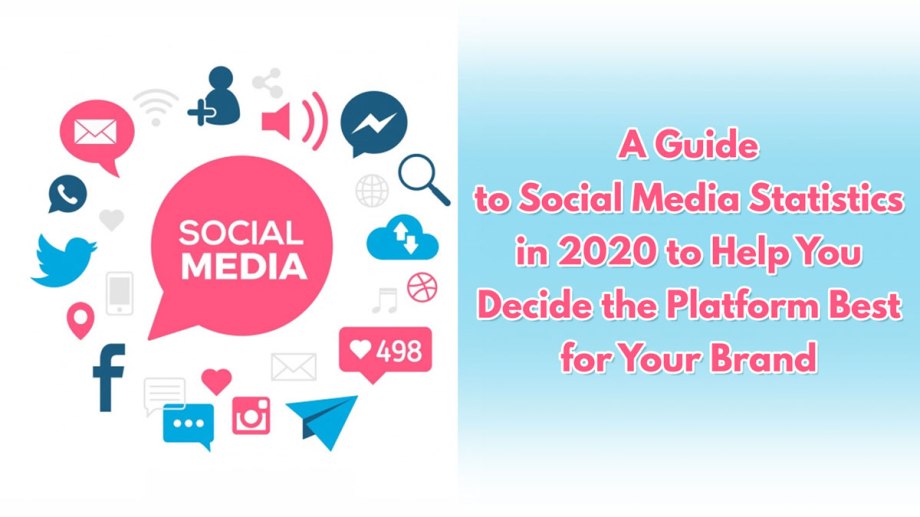Can social media marketing make you money – if you deliver your campaign correctly, it absolutely should.
Social media is a favourite subject of new businesses. After all, it’s free advertising. You make a post. It goes out. Potentially, thousands of users will see it and maybe way, way more. Unfortunately, to get the best results, it’s not this simple.
You have to get noticed. Dozens of brands like yours are already on social media. They have audiences feeding likes, shares, and attention. How you get your target audience locked into your brand on social media requires nothing short of strong, effective, and focused social marketing.

Who are you targeting your social media towards?
So you want to get noticed on social media. By whom? Define your target audience. Most businesses have multiple. If that’s you, you’ve got to segment your marketing choices to your demographics.
Age, gender, location, income, education, and values all separate an audience. Understand their lifestyle and habits. Furthermore, every social media platform comes with its unique audience. If you want to get noticed when you walk into a room, know who’s standing on the other side of the door before you open it.
What language does your target audience speak?
Once you know who you’re looking to connect with, you’ve got to make the content you’re offering delivered in their own language. The words chosen, style of the visual, and overall tone should reflect your audience.
The better you know your audience and their language, the more you will be rewarded in revenues and social media engagement. For example, targeting families will be different than chasing an audience of younger folks under-18 or seniors above 65.
Feature your mission and social responsibility on social media
No one wants to be ‘sold’ on social media. Users are looking for content – that’s it. If you don’t quite know what to talk about, consider your mission. What are your business values – feature them!
If you contribute or are connected to a charity, share that. Social responsibility matters to consumers. People want to support brands that are making the world a better place. If you’re doing more than selling product, publicize it.
When you’re authentic and connect on an emotional level, this makes the greatest impact. It’s almost like an anti-selling approach. You catch attention when you’re real. For a lot of brands, when you’re not selling on social media you’re selling.
How do I make money with social media marketing and my brand?
The goal here is to make money. That’s what this article will help you do. Naturally, you may wonder, how you’re supposed to do that on a platform like Facebook or Instagram, YouTube, LinkedIn, etc.
The goal or objective of a social media campaign is to make money. That said, making money on social media starts with generating leads and awareness, turning those into followers and shares, and fostering engagement with likes and comments.
A like isn’t money in your pocket. Neither is a share or comment. Don’t get us wrong. An action like this indicates interest. It’s that interest you spur into revenues. You’re focusing on ‘customer lifetime value’. On social media, you’re cultivating. This is how brands find strong revenues on social media marketing. They sell without selling!
What is multi-channel social media marketing?
It is unlikely you’re going to find success strictly on a single social media platform. Look at the companies that are most successful in your category. Chances are they’re on at least two or three social media sites.
Multi-channel social media marketing, sometimes referred to as ‘cross-channel marketing’, is a strategic way to create awareness. You use the social channels most beneficial to your goals. Every platform is a little different. The way you deliver your message may change slightly but consistency must be kept in the visuals and tone.
It is better to use multiple channels as well, distributing your efforts in a diversified marketing approach. This way, you’re reaching target audience who are exclusively on Instagram or whose only social media account is on Facebook.
Are images and video better than text on social media?
Make your social media marketing visual, impactful, and interactive. Images get more engagement than text posts and video gets the most engagement of any content type. Use different forms of content to keep your audience interested.
Consider a video series of short how-to tutorials. Make infographics or get some professional photography done to support a text post. The more authentic and memorable, the better.
Images and videos aren’t better than text on social media. They simply get your message out towards your audience in a different way. A successful, money-making social media marketing campaign will use a mix of text, images, videos, and more to get the job done.
What’s the best way to sell on social media? Here’s how you do it.
You don’t sell a product by manipulation. You don’t sell a product by putting down the competition. You even don’t sell a product by emphasizing its benefits. How to sell comes down to two words. “The experience.”
Look at any car ad. Sure, they might mention the benefits and other details. What the focus is, however, is on the experience of it. Think of your product and the people using it. What’s their experience with it – start there.
Make the look and feel of an experience attractive. Make it authentic, simple, lingering on emotional, and honest. Tell a story. How does someone connect with your product, service, or brand – this connection is what you can build on.
Look at it from the consumer perspective. They don’t buy something with the sole purpose of giving their money to you. They want the experience.
How important is timely content marketing on social media?
Timely, trendy social posts are important but it comes with a catch. Their relevancy is only temporary. In the moment, they generate attention. Past their expiration date, a post relying on trend and timeliness no longer serves a purpose.
Why so many social media brands use these type of posts is because they enter you into the conversation.
They also are great starting points for you to build content from. Use a holiday, a unique event, a fun news story, or a trending hashtag. You’re participating in the culture, demonstrating your brand is relevant and engaged.
How much money can social media marketing make my brand?
Social media marketing builds all around the click. You do your job and you get a click. For the present, it might just be a like or a share. Tomorrow, it could be a lot more. Clicks are how brands make money.
There are no guarantees that social media will make you money. Most brands don’t make anything, truth be told. They don’t have very unique or developed marketing. They set it on automatic, are lazy, or just plain don’t know what to do with their social media potential.
These brands take a very general approach and don’t see big results. Add to that the manipulation of social media algorithms, increased competition, and changing consumer behaviours, and it’s a recipe for failure. That is, unless you hire and have a smart social media marketing expert to rely on.
Some brands have made millions from social media marketing. It takes effort, smarts, and adaptation. But it can be done. And the effort’s more than worth it.
Learn how to use social media to make money. The results are there for the taking. Market intelligently. Tell stories. Be authentic. Be real. Focus on ‘the experience’. Hire a social media expert at Unlimited Exposure today. We provide customized social media strategies that work. Results are guaranteed. Let us take your brand and bring it to the top.









